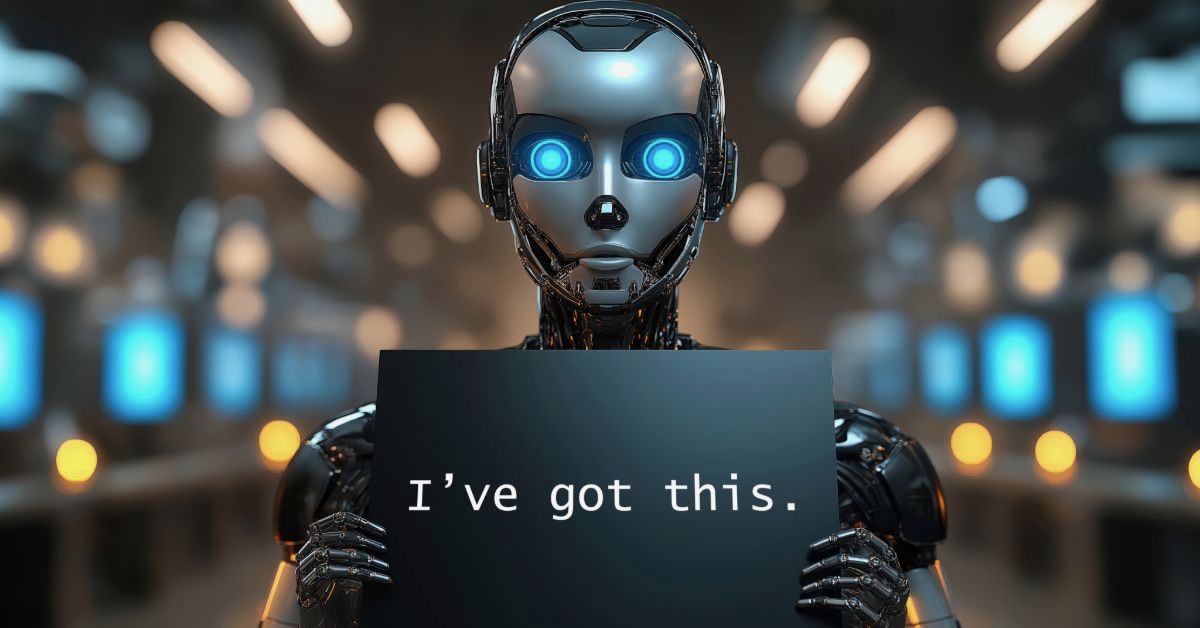By Meg McEvoy
Recently, Futurism highlighted AI’s latest foible in a story first reported by Business Insider: professors created a startup software company run entirely by AI agents that racked up thousands in costs doing…well, essentially nothing useful. A team from Carnegie Mellon conducted a face-off between the major agentic AI models from Google, OpenAI, Anthropic and Meta and compared their performance running a company, from ideation to execution.
The results were laughably bad: the best-performing model completed just 24 percent of the jobs assigned to it. And the study noted that the bots’ performance was prohibitively expensive, averaging nearly 30 steps and a cost of over $6 per task.
Stories like this allow us all to breathe a collective sigh of relief. As Joe Wilkins pointed out in Futurism, “AI isn’t coming for your career anytime soon. Not because it doesn’t want to — but because it literally can’t.”
At LIMELIGHT, we’re deeply immersed in the world of B2B, legal, and technology communications. We serve clients who are themselves at the bleeding edge of innovation, many of whom are actively integrating AI into their own operations. And we use AI, too—daily. It helps us increase velocity, refine strategy, surface data, and explore creative directions.
But this latest AI caper did get us thinking. With the role of AI in our daily lives only growing, what value will we as a human growth communications team continue to bring?
The Art of PR Can’t Be Automated
The allure of AI promises efficiency, scale, and autonomy. But public relations, communications-driven growth, and strategic storytelling are still fundamentally human endeavors. Here’s what no language model or autonomous agent can do:
- Build real relationships with reporters. Good media coverage doesn’t happen because of keywords or volume. It happens because someone who understands your story knows how to pitch it with credibility—and has earned the trust to get a response.
- Navigate nuance. Judgment matters—especially when reputations are on the line. Whether you’re navigating a live crisis, quietly heading one off, or calibrating a founder’s tone for an interview, these are moments where experience, discretion, and emotional intelligence reign supreme.
- Tell the story behind the product. AI can summarize a feature list. But crafting a compelling narrative that resonates with an investor, buyer, or editor requires empathy, creativity, and a sharp sense of context.
- Connect strategy to business goals. In professional services, outcomes matter. We’re not optimizing for vanity metrics—we’re aligning communications to support revenue, brand authority, and long-term credibility. That takes human leadership, collaboration, and domain knowledge.
Talent, Technology, and Trust
It’s no surprise that AI is top of mind for our clients. In-house teams and outside agencies alike are being asked hard questions: What does AI mean for marketing jobs? Are agencies still worth the investment? How do we balance innovation with quality and control?
The short answer: It’s not either/or. The best-performing teams today are those that embrace AI with intention—using it to increase capacity and insight—while doubling down on the talent, relationships, and experience that actually move the needle.
The Futurism story also raised another quiet truth: the AI agents weren’t cheap. The startup spent more than most small businesses do in their first few months—without delivering a single client win. No agency would survive that kind of performance. In fact, it’s our job to prevent that kind of inefficiency.
What Clients Need Most
At LIMELIGHT Growth, we believe in human + AI—not AI instead of humans.
We bring sector fluency in legal and tech, sharp instincts honed from years in the field, and the creativity to turn complex ideas into powerful stories. AI makes us faster. Smarter. Sometimes even funnier. But it doesn’t replace our role—it enhances it.
For clients navigating the evolving AI landscape, what you need most isn’t a dashboard. It’s a partner who understands how to drive growth with purpose and how to safeguard your brand along the way.
And that partner? Still needs to be human.
